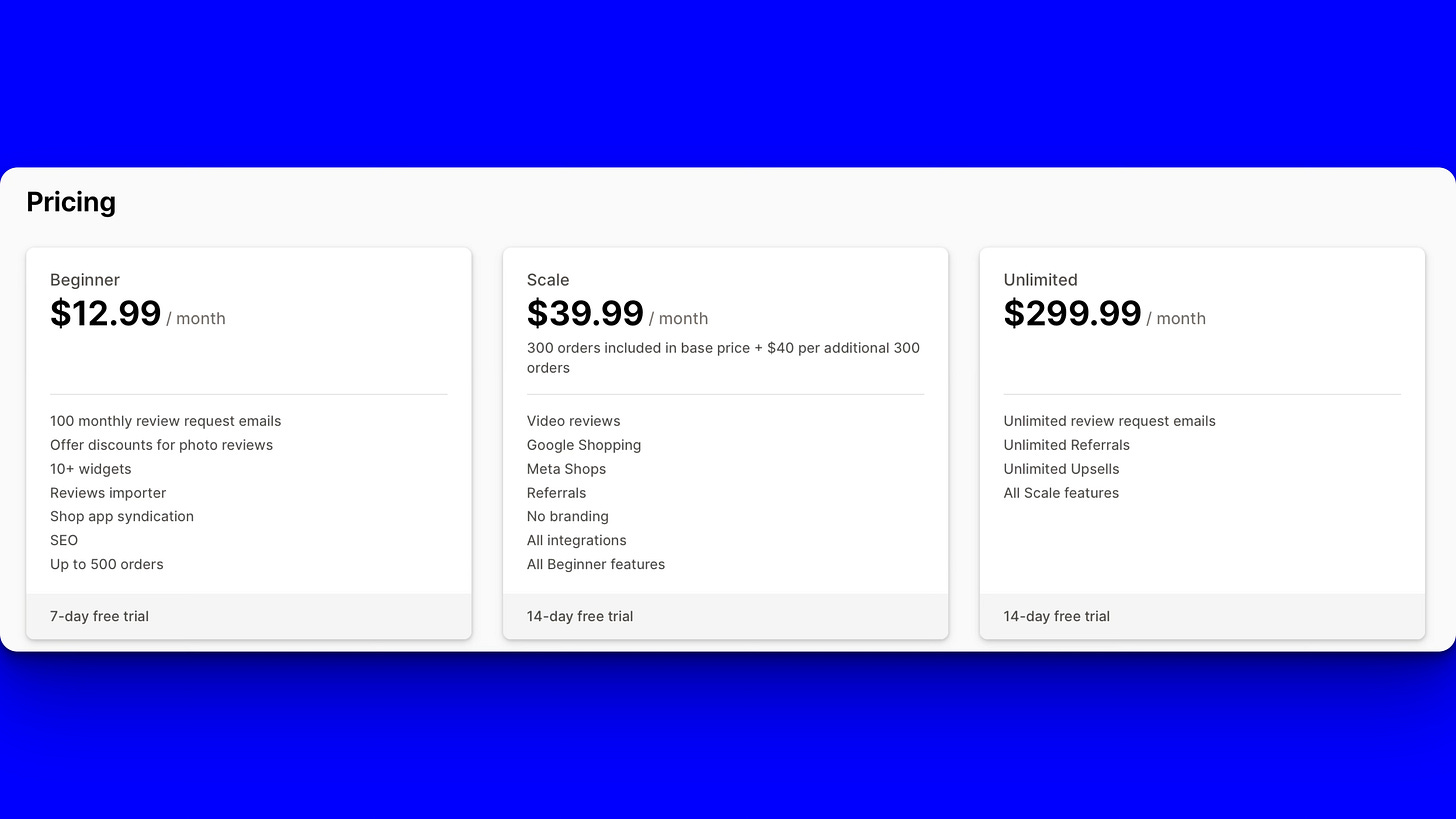Hello App Collective! I’m so excited about this week’s episode, and I hope you are ready. This will be another free episode. Thanks to everyone for being here this week.
What’s inside:
Podcast with the Lucky Orange Show (Round 2)
Shopify ads updates
Pricing strategy
Lucky Orange Show Podcast (Round 2)
ROUND TWO - DING!
…I AM HONORED to be invited back for a second time to the Lucky Orange Show to discuss analytics/data and how I use it with Shopify apps. If you missed my first episode last year and want to catch it, I’ve included it here.
Please watch, comment, and subscribe to the Lucky Orange YouTube channel! I hope you enjoy my chat with Sean McCarthy!
It’s also available on Spotify if that’s your preference.
Shopify ads updates
In case you missed it, Shopify rolled out a few updates for ad targeting on the Shopify app store last week.
This is exciting for those of us who value the Shopify ads opportunity because Shopify continues to give advertisers more and more to test within their ad campaigns.
The TL;DR is:
Mobile ad targeting and reporting—Before, you couldn’t separately target ads on mobile devices. You can now either add mobile to your campaigns or start separate mobile-only campaigns. And there’s mobile and device-specific reporting.
This might not be exciting for every app, but Google Analytics will tell you if you should explore it based on how merchants discover and install yours.
You can also segment bids for each device. In other words, you can bid differently for mobile keywords vs desktop.
Category ads got an upgrade - You can now geo-target and subscription plan target on the category ad level now. AHHHHHHH! FINALLY! This is kinda huge (for me - and you too, right?) Subscription plan-based targeting is still only exclusively available for Built for Shopify status. If you’re not moving in the BFS status level, what are you doing!? lol
Pricing strategy
There is a psychological strategy behind pricing your Shopify app, just like any product. You will notice that most Shopify apps offer three subscription plan options. The goal is to price your middle or “medium” pricing tier to be the targeted plan you want most merchants to choose.
This pricing strategy is called "The Decoy Effect" or "Price Anchoring." It’s a psychological principle used in pricing models to subtly guide customers toward a particular option—usually the middle-tier plan—by making it look like the best deal.
How It Works:
You offer three pricing tiers:
Small (Low Price, Low Features) – This option is affordable but lacks key features, making it less attractive to serious users.
Medium (Middle Price, High Value) – This plan is strategically packed with the best balance of features and price.
High (Premium Price, Max Features) – This plan is significantly more expensive and offers additional features, but most users don’t necessarily need them.
Why It Works:
Anchoring Bias – When users see a high-priced option, their perception of value changes. The medium option appears more reasonable by comparison.
The Decoy Effect – The cheapest option looks too basic, while the premium plan feels too expensive. The middle plan seems like the “smart” choice.
Loss Aversion – Users may fear missing out on features they might need, making the small plan feel too risky.
Shopify App Example:
Basic/Beginner Plan: $13/month – Limited features, good for solopreneurs.
Pro/Scale Plan: $40/month – Unlocks core advanced features (Most Popular).
Enterprise/Unlimited Plan: $300/month – Includes unlimited features.
By structuring your Shopify app’s pricing this way, you subtly push users toward the Pro/Scale Plan ($40/month), maximizing revenue while still offering choices.
Is your middle plan the plan you want most merchants to be on? Is it the pricing option where you are the most profitable? If not, it might be time to make some pricing adjustments and run some pricing experiments.
Thanks for reading! Catch you next week.
Deb





